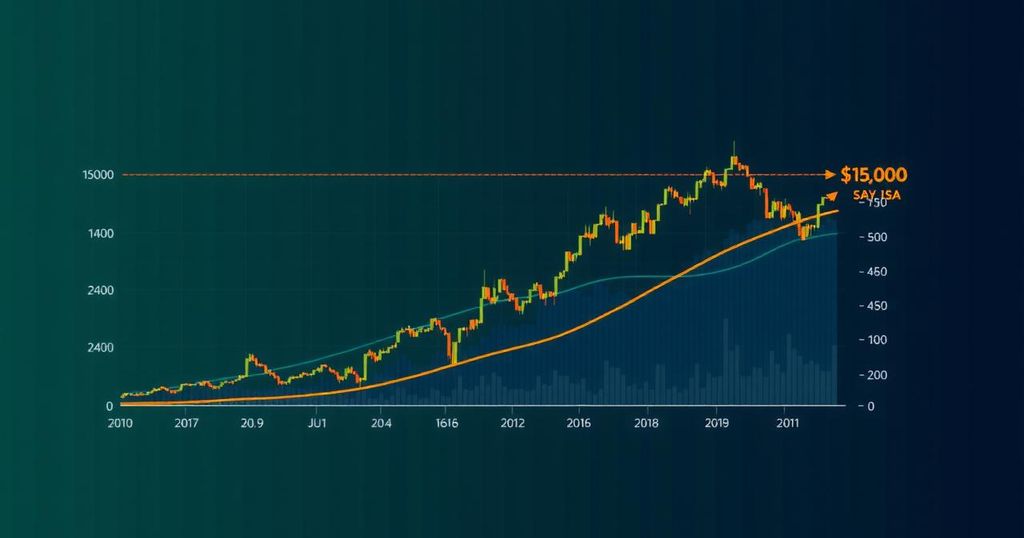Bitcoin Faces Increased Risk of Price Declines Amid Market Uncertainty
Summary
Bitcoin’s recent rise to $60,000 was brief as market fear and uncertainty have persisted, leading to a price decline to $58,740. This decline is influenced by profit-taking by short-term holders and selling activity by miners, which has shifted sentiment from neutral to fearful. Upcoming economic announcements may impact future price movements. The need for buying activity is crucial to prevent further declines.
Bitcoin’s recent surge to approximately $60,000 has proven to be fleeting as pervasive fear and uncertainty continue to afflict the market. Profit-taking by short-term holders and strategic selling by miners have contributed to a prevailing sense of doubt regarding a potential bullish rebound. Currently, the cryptocurrency is experiencing volatile price fluctuations, with a recent decline of 2.3%, bringing its value to around $58,740. This downturn has effectively shifted market sentiment from neutrality to apprehension. Initially, the surge in Bitcoin’s price encouraged renewed confidence; notably, the Short-term Holder Spent Output Profit Ratio (SPOR) exceeded the critical level of 1, indicating potential profitability for short-term holders. However, this optimism was short-lived, as the ratio has since reverted to a position near the break-even point. This situation suggests a reduction in profit margins and possible increasing selling pressure. The risks associated with further declines in Bitcoin’s price remain notably high. According to a recent report published by 10x Research, Bitcoin must surpass a descending trendline in order to alleviate these downside risks. Analysis of Bitcoin’s one-day chart reveals a persistent resistance during attempts at breakouts, primarily attributed to insufficient buying activity—a condition reflected in the Relative Strength Index, which currently stands at 50, indicative of a neutral market sentiment. A revival in buyer interest could enable Bitcoin to reclaim the resistance level of $60,656, signaling a reinvigorated bullish trend. Conversely, traders ought to monitor the 20-day Exponential Moving Average (EMA); failure to maintain this critical benchmark could instigate further losses. Moreover, the ongoing uncertainty is causing Bitcoin miners to reassess their positions, which is evidenced by a decline in the network’s hash rate. Data procured from BitInfoCharts indicates that following a spike in Bitcoin’s network hash rate, which exceeded 700 exahashes per second earlier this month, it has now dipped to approximately 665 EH/s. This reduced output suggests that decreased profitability due to plummeting Bitcoin prices has prompted miners to curtail their mining activities. Notably, substantial amounts—7,230 BTC, valued at over $400 million—were sent to exchanges by miners while Bitcoin traded around $60,000, reinforcing the notion of miner capitulation and further elevating Bitcoin’s downside risk. Despite these challenges, there exist narratives that may serve as positive catalysts. The upcoming announcement from the Federal Open Market Committee (FOMC) regarding potential interest rate adjustments could be pivotal. Market analysts anticipate a rate cut, which has the potential to invigorate risk assets, including Bitcoin. However, as the market appears to have already accommodated expectations of a Federal Reserve pivot, any subsequent price fluctuations could be minimal following the announcement. Notably, data from the CME FedWatch Tool reflects that approximately 59% of investors predict a more significant cut of 50 basis points, potentially raising concerns about a fragile U.S. economy and driving investors toward safer assets such as gold.
The cryptocurrency market functions within a framework influenced significantly by investor sentiment and market dynamics. Bitcoin, regarded as a bellwether for the wider cryptocurrency landscape, frequently experiences rapid fluctuations in price, attributed to factors including miner behavior, market speculation, and economic policies. Market conditions are further exacerbated by external influences, such as monetary policy decisions from institutions like the Federal Reserve, which can alter investor perceptions of risk and reward in the financial markets. Understanding the interplay between these variables is crucial in assessing the future trajectory of Bitcoin’s price.
In summary, Bitcoin is presently experiencing pronounced volatility, primarily stemming from profit-taking behaviors among short-term holders and reactive selling by miners amid a climate of fear and uncertainty. The potential for further price declines remains substantial unless Bitcoin can successfully break through identified resistance levels. Additionally, the impending FOMC interest rate announcement may unfold both challenges and opportunities, influencing market sentiment significantly. As such, traders should proceed with caution and remain aware of the prevailing market dynamics affecting Bitcoin’s price.
Original Source: ambcrypto.com








Post Comment